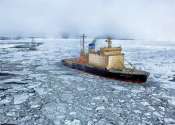Arctic Ocean started getting warmer decades earlier than we thought, study finds
The Arctic Ocean has been getting warmer since the beginning of the 20th century—decades earlier than records suggest—due to warmer water flowing into the delicate polar ecosystem from the Atlantic Ocean.









